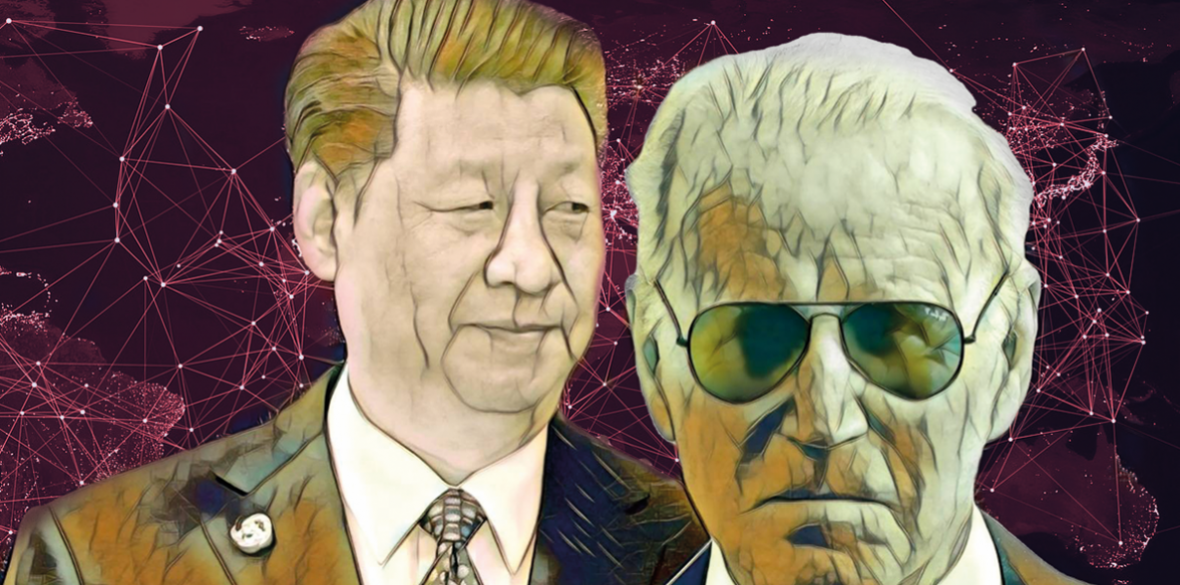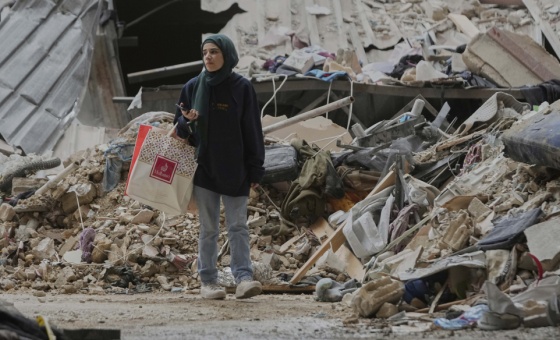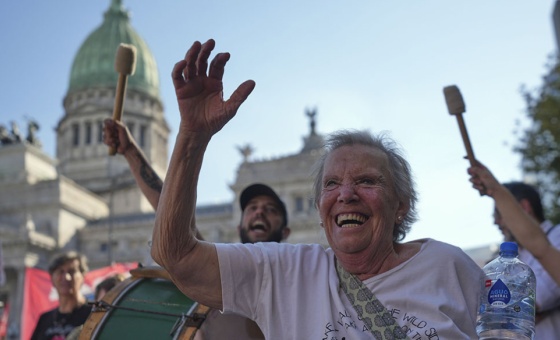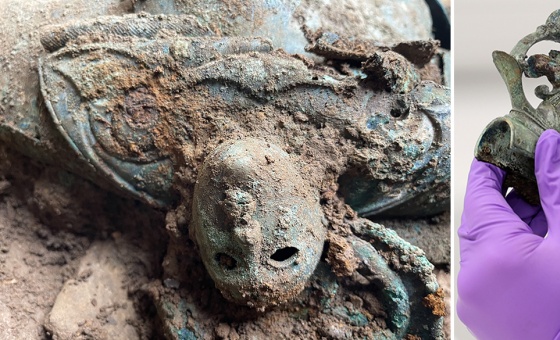This is the last article you can read this month
You can read more article this month
You can read more articles this month
Sorry your limit is up for this month
Reset on:
Please help support the Morning Star by subscribing here
BACK in September 2002, Dan Plesch wrote an article in the Guardian titled Iraq first, Iran and China next. Less than a year earlier, George W Bush had put China on a nuclear hit list along with Russia, Iran, Iraq, Syria and North Korea. Twenty years on, it seems China’s turn has arrived, now identified as the US’s most consequential geopolitical challenge.
Iraq was a turning point for the world as Bush “seized the unipolar moment.” Shock and awe and full-spectrum dominance in air, land, sea and space presaged a new militarism to bolster US global supremacy.
Blatantly displacing the UN on the pretext of “humanitarian intervention,” the US found a new means of rallying allies in a “coalition of the willing,” embedding key Nato partners into “out of area” operations.
As Plesch foresaw, the 2003 war set precedents to be used against other states that stood out against US global control. US militarism has advanced into air-sea battle plans to wipe out multiple cities across China at a single strike, with trillions of dollars sunk into upgrading full spectrum dominance capabilities; “humanitarian intervention” has evolved into a new cold war of “democracies against autocracies” edging the UN further aside.
And now, using the Ukraine war to subjugate Europe and weaken Russia, the US is beginning to assemble a new “coalition of the willing” in the “defence of Taiwan,” ordering the global security architecture anew as it sets the stage for a new war on China.
US political elites have convinced themselves that China is bent on global hegemony. Despite Xi Jinping’s assurances to Biden that China “has no intention to challenge or displace the United States,” they revert to racialised stereotypes of the Chinese as inveterate liars — recall the words of the popular 1880s music hall song: “For ways that are dark and tricks that are vain, the Heathen China is peculiar” — rather than face history.
What does China want?
That China was its ally in WWII is something the West conveniently forgets. Nationalist and communist armies successfully blocked the bulk of the Japanese forces from advancing west. This was recognised by Churchill and Roosevelt when they signed the 1943 Cairo Agreement with Chiang Kai-shek, stipulating that the territories seized by Japan from China, including Taiwan, be restored, and that Japan be stripped of all the islands in the Pacific seized or occupied since 1914.
As one of the allies, China was part of the establishment of the UN, taking a permanent seat on the security council. But the UN order as based on the Cairo Agreement, confirmed in the 1945 Potsdam Declaration, was not to be. Instead, the Japan peace settlement was determined at the behest of the US by the 1951 San Francisco Conference from which both the People’s Republic (PRC) and Republic of China (RoC) and the two sides of the Korean war were excluded with the USSR refusing to attend. US power came to prevail over the Pacific through a series of bilateral alliances and an extensive array of US military bases.
Despite political improvements over time — the PRC regained the UN seat, the USSR and China reached their own peace deals with Japan, and the US and China established official “One China” ties — the US-dominated military pattern remained and several territorial issues covered by the WWII agreements were left to fester.
What China wants is to see the promise of the Yalta of the East system realised through reunification with Taiwan and from this a co-operative security arrangement for the Pacific together with the US.
A new militarised Indo-Pacific
US control over the Pacific was never complete, resisted by the peoples of China, Korea and Indochina and by the non-alignment of south-east Asian states. The US was never satisfied.
Today, claiming the Russian invasion of Ukraine “raises the spectre of a Chinese takeover of Taiwan,” the US is piecing together a new militarised security structure for the region.
Firstly, its own forces are increasing manoeuvrability along the first island chain, from Japan to the Philippines, tightening a grip around Taiwan and reinforcing control over the wider Pacific. Existing bases in Guam and Okinawa, north of Taiwan, are being strengthened, and new bases in the Philippines to the south of Taiwan and on the newly built Japanese island of Mage are plugging gaps in the arc of alliances and bases hemming in China’s coastline. A US nuclear submarine base is under construction in Australia.
But it is the rehabilitation of Japan as a military power that is the biggest change in the region’s security pattern. Alone among US allies, Japan identifies China as the main strategic challenge; a now upgraded US-Japan alliance forms a new Indo-Pacific strategic axis, one linking into Aukus through agreements with both Australia and Britain, to allow deployment of forces on Japanese soil. The Philippines is also being pressed into a similar arrangement.
In this way, the US is attempting to pull together a core group of militarily committed powers opposing China. With Japan’s military budget taking a qualitative leap to double in five years, Australia’s spend is also set to rise; meanwhile, Taiwan’s increased budget of $19 billion is being backed by the US-pledged $10bn in military aid.
The long-held aspirations of the US neocons for an armed Taiwan and a remilitarised Japan are materialising.
Setting conditions for a new world war
Bridging the divide between Euro-Atlantic and Indo-Pacific security — something it never managed in the past — the US is shaping a global Nato to coil like a python, squeezing Russia and China from the east and the west.
Britain — with the voyage of the Queen Elizabeth carrier strike group East of Suez and the new military agreements with Japan — is leading the way for Europe. France and Germany have both sent warships to the South China Sea; France and Italy are upgrading relations with Japan.
Australia, South Korea and Japan will again attend the 2023 Nato summit, and Japan has become a regular participant in Nato Chief of Staff meetings. Meanwhile, Nato forces made up over 40 per cent of last year’s massive Rim of the Pacific exercises in Hawaii.
The US is applying immense pressure to break the remaining post-WWII restraints on war in the region as it has been doing in Europe. Learning from the Iraq experience not to alienate its allies, the US is using the more flexible “coalition of the willing” format to sign a wider range of partners onto its Indo-Pacific agenda.
Around the militarised core, supporters — France, Germany, Italy, South Korea and more — would gather to supply material, arms, logistical, economic and technological assistance, with India in the Quad involved more loosely — all acting in co-ordination, singing from the same hymn sheet of “freedom and democracy.”
Regional militarisation is reviving right-wing nationalist forces; nuclear proliferation is a real danger. The UN itself, designed from the lessons of WWI as well as WWII to preserve world peace, is coming under existential threat.
The last time major world powers came to a face-off this ended in world war; should war break out directly between the permanent members of the UN security council — the US and Britain versus Russia and China — this would finally finish the organisation.
But the global South is also awakening, recognising the bid to perpetuate US-led Western supremacy. As we peace and anti-war activists draw inspiration from the massive protests against the Iraq war 20 years ago, we need to deepen historical and international understandings to mobilise for a worldwide mass movement — a solid foundation on which to reunite nations for peace and common security.
Jenny Clegg is a writer and researcher specialising in China’s development and foreign policy.










